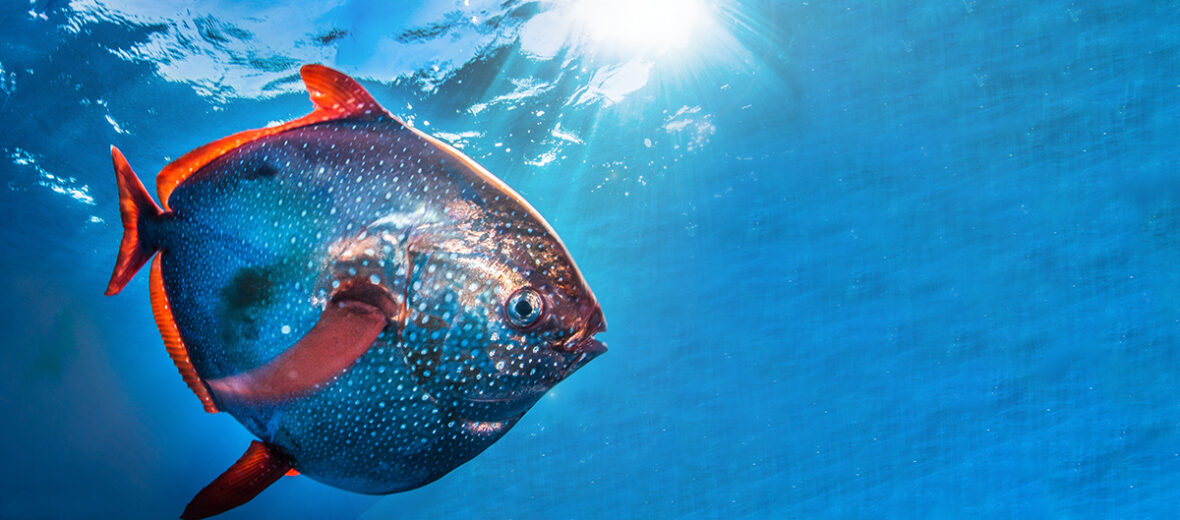
The moonfish, aka cravo, Jerusalem haddock, kingfish, moonfish, or opah, can be found throughout temperate and tropical oceans of the Atlantic, Indian, and Pacific. Even though these fish face the threats of overfishing and pollution, they are still abundant, for now. They are listed as Least Concern by the IUCN. Their population trend is currently unknown.
First the Stats…
Scientific name: Lampris guttatus
Weight: Up to 600 lbs.
Length: Up to 6.6 feet
Lifespan: Up to 15 years
Now on to the Facts!
1.) These fish are pelagic (dwell in the open sea).
2.) They are often caught in deep nets meant for bigeye tuna.
3.) In 2005, the fishes caught numbered in excess of 13,330.
4.) The moonfish was first described by Danish zoologist Morten Thrane Brünnich in 1788.
5.) Initially it was thought that there were only 2 species of moonfishes. However, it was later determined that there are 5.
But wait, there’s more on the moonfish!
6.) These critters are also endothermic (warm-blooded). They are capable of maintaining a core temperature higher than the surrounding ambient temperature (upwards of 41ºF).
7.) Most fish are totally ectothermic (cold-blooded). Some, like the tuna and lamnid sharks (like the salmon shark), have evolved what is referred to as regional endothermy (parts of the body core are kept at a warmer temperature).
Did you know…?
The genus name Lampris hails from the Ancient Greek word lampros, meaning “clear” or “brilliant”. Whereas the Latin species name guttatus translates to “spotted” and refers to the spotted body of these fish.
8.) While typically solitary, these fish will often school with various species of tuna.
9.) Small fish, squid, and krill are all on the menu.
10.) The juvenile fish take on a slender shape and begin transforming to the more round adult shape at around .42 inch in length.
But wait, there’s still more on the moonfish!
11.) Moonfishes most likely spawn in spring.
12.) Females lay upwards of 300,000,000 eggs each season. But most are eaten by other oceanic creatures before they even hatch.
13.) The moonfish tends to dwell at around 1,640 feet deep.
Now a Short Moonfish Video!
Be sure to share & comment below! Also, check out the Critter Science YouTube channel. Videos added regularly!
Want to suggest a critter for me to write about? Let me know here.
Some source material acquired from: Wikipedia & IUCN
Photo credit: iNaturalist



